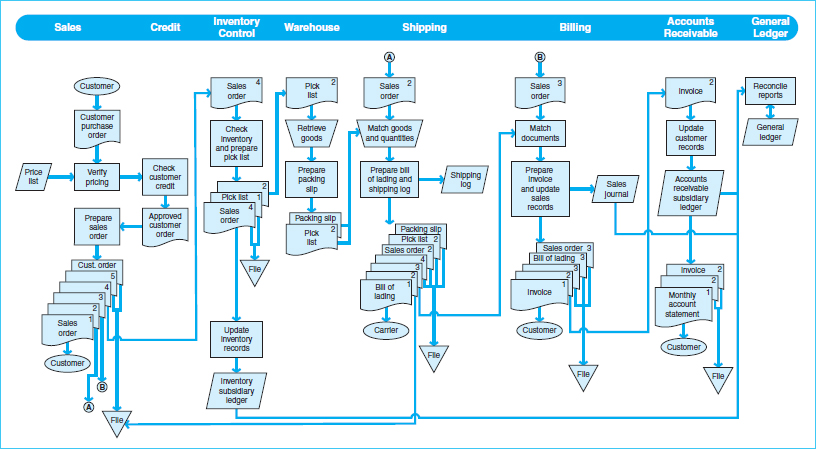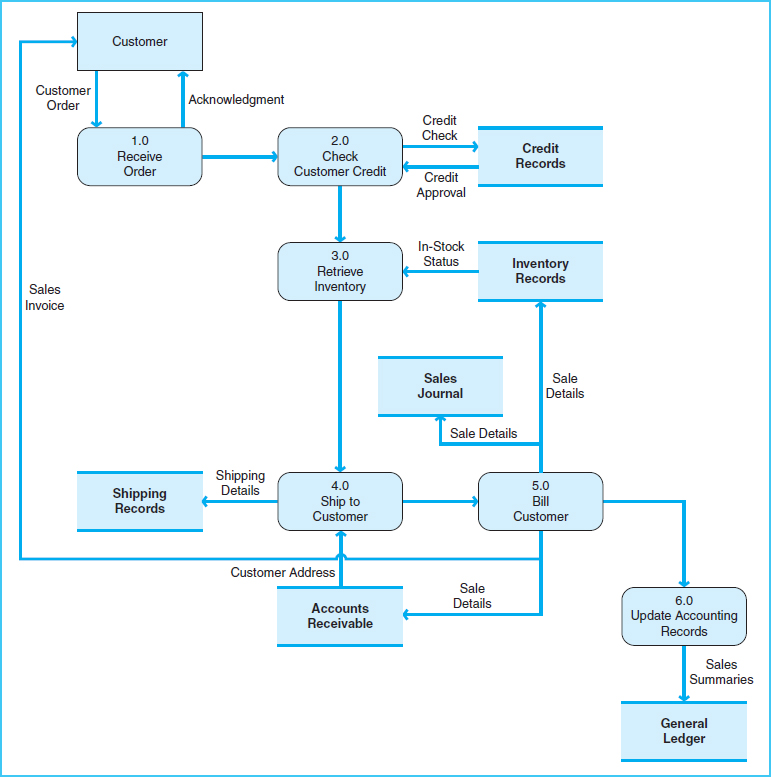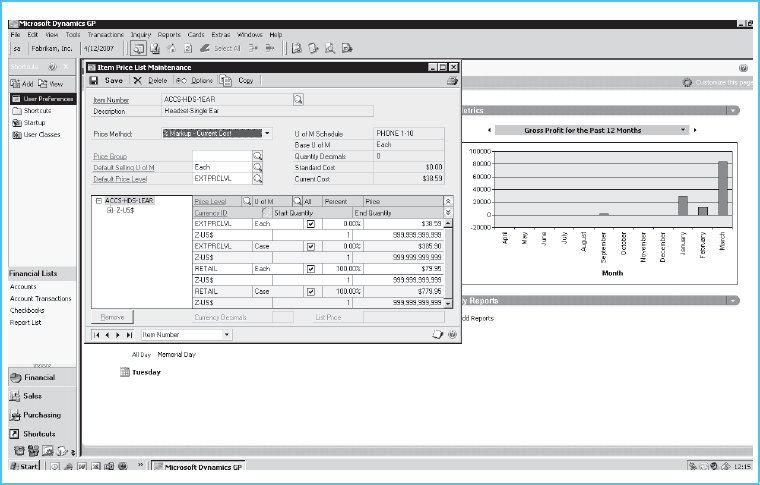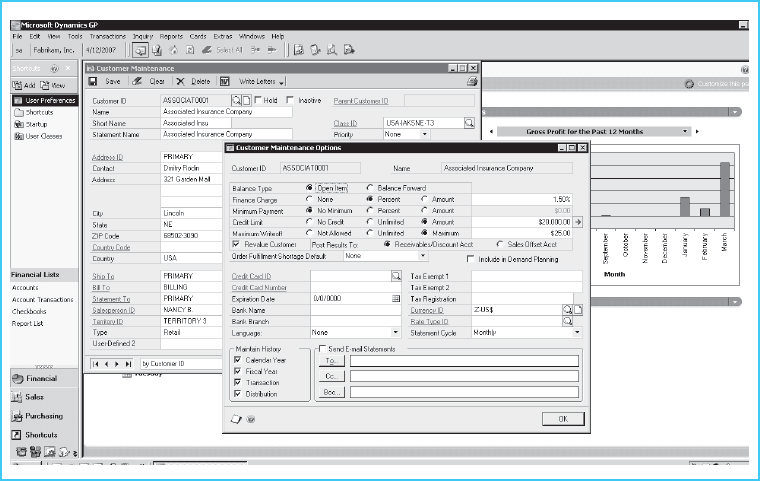SALES PROCESSES (STUDY OBJECTIVE 2)
The business process map in Exhibit 8-2 depicts the activities related to sales processes. Exhibit 8-3 shows a document flowchart for the sales process, and Exhibit 8-4 shows the sales process in a data flow diagram (DFD). The process begins when a buyer, or customer, places an order with the company. The form designating this order is referred to differently by the customer and seller. From the customer's perspective, this order is called a purchase order (because it is making a purchase), while the seller refers to this same order as a sales order (because it is making a sale). A customer's purchase order is the source document that conveys the details about the order. When a customer's purchase order is received, it must be entered into the seller's system as a sales order. Depending on the extent of computerization of the seller's system, this could be either manually entered or read automatically by the system.
Sales orders are calculated on the basis of current selling prices of the items sold. The source of these prices is the price list. A price list is the entire set of preestablished and approved prices for each product. In most accounting software systems, selling prices are attached to each product in the company's inventory. Exhibit 8-5 (on page 307) shows a price list for a product in Microsoft Dynamics®. Notice that the same item includes different prices for sales by the case and sales by the individual unit.
Once a sales order is in the system, the customer's credit status must be checked. For existing customers, a new sale on account should be approved only if it is determined that the customer has not exceeded the established credit limit. The credit limit is the maximum dollar amount that a customer is allowed to carry as an accounts receivable balance. Each customer should have a preestablished credit limit, which designates the maximum amount of credit the company is willing to extend to that customer. Credit limits may be adjusted on the basis of payment history and the current amount of uncollected sales outstanding. If a sales order is for a new customer, the creditworthiness of that customer must be evaluated before the sale is approved. As new customers are entered into the system, a credit limit must be set for them. Exhibit 8-6 shows a credit limit of $20,000 for a customer, Associated Insurance Company, as it would be established in Microsoft Dynamics® accounting software. Whether it is a new or an existing customer, customer records must be examined to determine whether to accept the sale.


Exhibit 8-3 Document Flowchart of a Sales Process

Exhibit 8-4 Sales Processes Data Flow Diagram
If the customer has not exceeded the credit limit, the order is accepted and the customer is notified. Again, it is important to determine whether this sale will push the customer over the established credit limit. In reference to Exhibit 8-6, if this customer's account balance showed that it owed $15,000 from a prior sale, the company would not be willing to authorize another sale to this customer for an amount over $5000, as its total resulting account balance would then exceed the established credit limit.

Exhibit 8-5 List Price of a Product in Microsoft Dynamics®
It is also important to check the inventory to determine whether the items ordered are in stock. If the items are in stock, a pick list is prepared. A pick list documents the quantities and descriptions of items ordered. Items on the pick list should be pulled from the warehouse shelves and packaged for the customer. A packing slip (or packing list) prepared by warehouse personnel lists all items included in a shipment. For a company-to-company sale, the goods are typically shipped by a common carrier such as a trucking company or rail carrier. The terms of the agreement between the company and the carrier are documented in a bill of lading. Finally, inventory records are updated to reflect the decrease in inventory, and a shipping log is prepared. A shipping log is a chronological listing of shipments that allows management to track the status of sales and to answer customer inquiries regarding order status.
Once shipment has occurred, customers should be billed for the sale. A sales invoice is prepared and sent to the customer. The sales invoice (typically referred to as a bill) provides details of the sale and requests payment. The timing of the billing process is important. Since customers will be unhappy if they are billed before they receive the items purchased, billing should not take place prior to shipment. However, it is important to avoid waiting very long after shipping to bill the customer, since that will delay the collection of cash. When customers are billed, accounts receivable records should be updated to reflect the increased amount owed by the customer. Also, the sale should be recorded in a sales journal so that the amount will be included in revenue during the current fiscal period. A sales journal is a special journal that records sales transactions. Periodically, the sales amounts in a sales journal are posted to the general ledger. Many companies also prepare customer account statements on a regular basis to accumulate and summarize all the transactions that have taken place between the customer and the company within the period.

Exhibit 8-6 Establishing a Credit Limit in Microsoft Dynamics®
